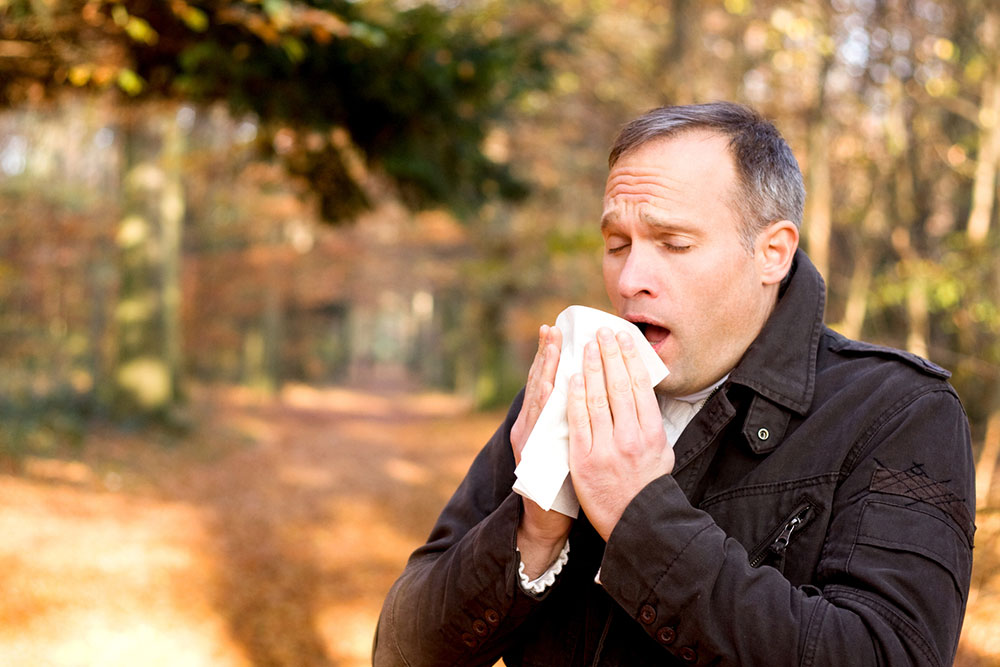
Tree pollen allergy – Symptoms, types, and management tips
Tree pollen allergy is one of the most common types of allergies. Pollen is a fine powder-like substance produced by a tree. The wind picks it up and spreads it around, causing more of that tree’s species to grow in different places. As this happens, the pollen sometimes lands on one’s clothes and blows in through open windows. For those allergic to tree pollen, this can quickly trigger several allergy symptoms.
Symptoms of tree pollen allergy
In general, tree pollen causes hay fever or allergic rhinitis, which has several symptoms. Some common signs of tree pollen allergy include:
Persistent sneezing
This is one of the most common tree pollen allergy symptoms. One may sneeze as the body tries to remove the allergens from the nasal passages. The sneezing may persist for a while, making it hard to focus on the task one is doing.
Runny or stuffy nose
Nasal congestion causes stuffiness or a runny nose. This symptom usually occurs when the allergy triggers inflammation in the nasal passages.
Itchiness in the eyes, nose, and throat
When pollen triggers an allergic reaction, the immune system releases histamines as a self-defense mechanism against the foreign particles. This causes itching in the eyes, throat, and nose, which can cause discomfort.
Watery eyes
The body might naturally respond to the irritation brought on by the pollen by producing tears. That’s why a person may experience watery eyes. Tears try to wash off the allergens and clear the nasal passages.
Cough
Sometimes, pollen irritates the throat and starts a dry and persistent cough.
Constant fatigue
As too many symptoms develop, managing them can be exhausting. Besides, the immune system goes on an overdrive trying to fight off the allergens. This too causes quick depletion of energy. So, a person experiences constant fatigue until the allergy goes away.
Sinus pressure and headaches
Persistent inflammation and congestion sometimes cause pressure to build up in the sinuses. This can cause headaches and pain around the nose, eyes, and facial muscles.
Wheezing and shortness of breath
Those with asthma usually experience wheezing and difficulty breathing. When such individuals develop tree pollen allergies, their symptoms worsen, which can also disrupt sleep.
Types of tree pollen allergy
Hundreds of plant species release pollen into the air, which can trigger allergic reactions. Some common culprits are birch trees, oak trees, grass, and ragweed plants.
Birch pollen allergy
One of the most common airborne allergens during spring is the pollen of birch trees. When birch trees bloom, they release tiny grains of pollen. A single birch tree produces nearly 5.5 million pollen grains, which the wind scatters in the surrounding area.
Oak pollen allergy
Like birch trees, oak trees scatter pollen in the surroundings through the air during springtime. Although the pollen from oak trees is only mildly allergic, it can stay in the air longer. So, the risk of getting an allergy from oak pollen is usually quite high.
Grass pollen allergy
Certain types of grass can also cause pollen allergies. They not only release their own pollen but also carry pollen from other trees. Some common types of grass that can cause pollen allergies include perennial rye, Bermuda grass, and bluegrass.
Ragweed pollen allergy
Ragweeds are highly likely to cause allergies. A particular plant of the ragweed species can release about a billion grains of pollen. These weeds are usually active during the early fall, but in certain areas, ragweed pollen starts spreading much before fall begins. Sometimes, the spread can begin as early as August and continue through November. Ragweed pollen can travel for miles driven by wind and even survive through the early winter.
Ways to manage and prevent tree pollen allergy symptoms
Several easy steps can help prevent and manage allergy symptoms caused by tree pollens. For instance, using a squeeze bottle or a neti pot is a common practice to flush out the pollen and allergens from the nasal passage. Doing this regularly can give a lot of relief from the allergy symptoms. Here are some other tips to manage the allergy:
– Always remove and wash clothes that have been worn outside.
– Make a habit of drying clothes in a dryer instead of a clothing line outdoors, where pollen is most likely to collect on clothes.
– Use air conditioning at home and in the car.
– Get a portable high-efficiency particulate air (HEPA) filter or dehumidifier that removes pollen and other allergens from the indoor air.
– Regularly vacuum the house with a vacuum cleaner equipped with a HEPA filter.
– Stay indoors during dry and windy days when the pollen count is likely to be higher than usual.
– If there are emergencies on high-pollen days and stepping out is a must, wear a dust mask that covers the nose and mouth properly.
– Close all the doors and windows of the house when peak pollen season arrives.
If allergy symptoms persist, one should consult a healthcare professional. Depending on the case, the expert can suggest a personalized plan to tackle the problem and avoid complications. They can also suggest a few better ways to prevent the allergy from reoccurring.


